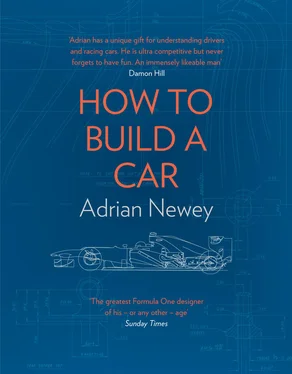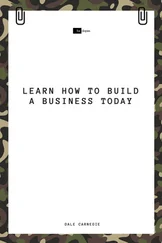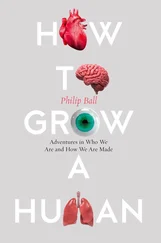Fortunately Rob is not only a very creative designer but also a designer who understands that if there is an overall performance benefit to be had, and if it looks viable, you’ve got to give it a go. It was a brave, I guess you could argue an irresponsible decision, in that if we hadn’t got it to work it would have compromised our season.
It took longer than I hoped. During the early part of the season, the KERS system was in the habit of packing up and was constantly in danger of catching fire. But once we made it reliable, we had this underlying baked-in package advantage that we were able to carry for the balance of that season and the next two, a key part of the 2011, 2012 and 2013 championship-winning cars. Which, as you can imagine, appealed to my inner love of continuity.
If the fact that I still use a drawing board and pencil sounds old-fashioned, that’s nothing compared to my start in education. At four I was sent to the local convent school where I was told that being left-handed was a sign of the devil. The nuns made me sit on the offending hand, as though I could drive out the demon using the power of my godly bum.
It didn’t work. I’m still left-handed. What’s more, when I went from that school to Emscote Lawn prep school in Warwick, I still couldn’t write. As a result I was placed in the lower set. And what do kids in the lower set do? They mess around.
My earliest experiments in aerodynamics came during a craze for making darts out of felt-tip pens and launching them at the blackboard. We’d have competitions, and I was getting pretty good until one particular French lesson, when for reasons best known to my 12-year-old self I launched my dart straight up into a polystyrene ceiling tile. The teacher turned from the blackboard, alerted by suppressed laughter that fluttered across the room, and what he saw was a classroom full of boys with their hands clamped over their mouths and one, me, sitting bolt upright with an expression like butter wouldn’t melt.
Sure enough, he made his way through the desks to mine, about to demand what was going on, when the dart above our heads chose that moment to come unstuck from the ceiling, stall, turn sideways and bank straight into the side of his neck. Statistically, it was a one in a thousand chance. It was poetry.
That wasn’t my only caning. The other one was for rigging up a peashooter from a Bunsen burner tube and accidentally tagging a science teacher instead of the mate I was aiming at.
Speech days were especially boring. On one particular occasion, me and my friend James had been playing in the woods, found some aerosol cans and lobbed them on the school incinerator. Expecting them to blow up straightaway, we took cover behind some trees, only to be frustrated by a distinct lack of pyrotechnics. Eventually we got tired of waiting and wandered off.
Shortly after that, speech day commenced, parents assembled and we took our seats, ready to be bored rigid, when suddenly from the woods came a series of booms and the stage was showered in ash. James and I looked at each other gleefully, but we counted ourselves lucky not to be caught and punished for it.
When it came to the challenge of making a hot-air balloon, I was able to put to good use my interest in building things. By this time I was beginning to understand the concept that if you want something to go up, you need to make it big in order to achieve a good volume-to-surface-area ratio, so I made a large balloon out of tissue and bent coat-hangers, complete with solid-fuel pellets for heat. Unfortunately the pellets didn’t generate enough oomph to get the balloon airborne, so I carted my dad’s propane burner into school and used that instead. The headmaster came out to see what was going on, leant on the burner and burnt his hand, which cemented his dislike of me.
At home I continued messing about with motor cars. In 1968 Dad bought a red Lotus Elan in kit form (other families had large saloons, we had sporty two-seaters), which according to Lotus you could build yourself – ‘in a weekend’, although even Dad could never manage that – and save on car purchase tax. Manna from heaven for an obsessive tinkerer like my dad, and I was his willing helper, happy to put up with his occasional, volcanic loss of temper in order to watch a car being built from a kit.
Meanwhile, I’d started building model kits. Most of my friends were making Messerschmitts and Spitfires but naturally I preferred cars, and my favourite was a one-twelfth-scale Tamiya model of a Lotus 49, as driven by Jim Clark and Graham Hill.
This was the first year that Lotus and their founder Colin Chapman had introduced corporate sponsorship, so the model was liveried in red, white and gold and had all the right details, moving suspension, the works. It was a great model by any standard, but what was especially noteworthy from my point of view was that the parts were individually labelled. Suddenly I was able to put a name to all the bits and pieces I’d see on the floor of the garage. ‘Ah, that’s a lower wishbone. That’s a rear upright.’ This, to me, was better than French lessons.
By 12 I began to get bored of putting together other people’s designs and started sketching my own. I was drawing constantly by then – it was the one thing I was good at, or, rather, the one thing I knew I was good at – as well as clipping pictures out of Autosport and copying them freehand, trying to reproduce them but also customise them at the same time, adding my own detail.
Needless to say, as I look back on my childhood now, I can identify where certain seeds were planted: the interest in cars, the fascination with tinkering – both of which came from my dad – and now the first flowerings of what you might call the design engineer’s mind, which even more than a mathematician’s or physicist’s involves combining the artistic, imaginative left side of the brain – the ‘what if?’ and ‘wouldn’t it be interesting to try this?’ bit – with the more practical right side, the bit that insists everything must be fit for purpose.
For me, that meeting of the imagination with practical concerns began at home. In the garden was what my father called a workshop but what was in fact a little timber hut housing some basic equipment: a lathe, bench drill, sheet-metal folding equipment and a fibreglass kit. In there I set up shop, and soon I was taking my sketched-out designs and making them flesh.
I’d fold up bits of metal to make a chassis and other bits out of fibreglass. Parts I couldn’t make, like the wheels and engine, I’d salvage from models I’d already put together. None of my school friends lived close by, so I became like a pre-teen hermit, sequestered in the shed (sorry Dad, ‘the workshop’), beavering away on my designs with only our huge Second World War radio for company. I spent so much time in there that on one occasion I even passed out from the chloroform I used to clean the parts with.
Back at school, I employed my models for a presentation, which was well received considering how mediocre I was in every other aspect of school life. ‘Can do well when he is sensible. I regret that his behaviour in class has too often been extremely silly,’ blustered my traumatised French teacher in a school report. ‘Disinterested, slapdash and rather depressing,’ wrote another teacher.
The problem was that I shared traits inherited from both my mother and my father. My mum was vivacious and often flirtatious, a very good artist but mostly a natural-born maverick; my dad was an eccentric, a veterinarian Caractacus Potts, blessed or maybe cursed with a compulsion to think outside the box. No doubt it’s an equation that has served me well in later life, but it’s not best-suited to school life.
I distinctly remember a science lesson on the subject of friction. ‘So, class, who thinks friction is a good thing?’ asked the teacher. I was the only one who raised his hand.
Читать дальше












